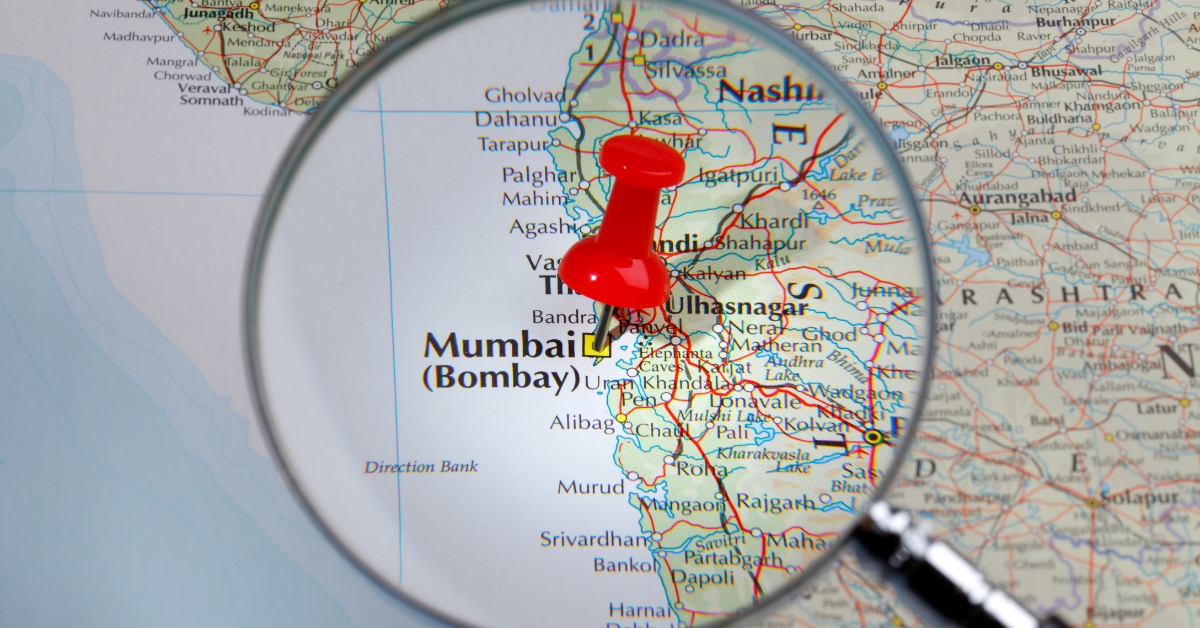In Japan, Mumbai was once written as “孟買.” This unusual kanji form comes from the old colonial name Bombay and was chosen not for meaning but for sound resemblance. Understanding this kanji helps learners see how Japanese adopted foreign words and reveals the cultural link between language and history.
The Connection Between Mumbai and “孟買”
Mumbai is the economic hub of India and one of the world’s most populous megacities. With over 20 million residents, it has developed as the center of Bollywood cinema and finance.
In Japan, this city was once written as “孟買”, a rendering based on the old name Bombay, before it was officially changed to Mumbai in 1995.
The practice of converting foreign place names into kanji has a long history in the Sinosphere. Thus, “孟買” was created not for its meaning but to capture the sound.
The Meaning of “孟買” in Kanji
Kanji characters carry inherent meanings, but in this case, they were chosen solely for phonetic reasons.
| Kanji | Original Meaning | Phonetic Role |
|---|---|---|
| 孟 | Eldest child, great, large | Represents the sound “bon” or “mou” |
| 買 | To buy, trade | Represents the sound “bei” or “bai” |
The key point is that “孟買” has no intended literal meaning, only a phonetic function.
Common Misunderstandings Among Foreigners
Some Japanese learners mistakenly interpret “孟買” literally as “Great Purchase” or “Big Buy.” This is incorrect.
When adapting foreign names, Japanese often ignored the literal meaning of characters and instead prioritized sound.
| Country | Kanji Form | Literal Translation | Actual Purpose |
|---|---|---|---|
| America | 亜米利加 | “Adding profit with rice” | Pure phonetic rendering |
| France | 仏蘭西 | “Western orchid of Buddha” | Pure phonetic rendering |
| Germany | 独逸 | “Independent excellence” | Pure phonetic rendering |
“孟買,” like these, is not semantic but purely phonetic.
The Status of “孟買” in Modern Japanese
In modern Japanese, Mumbai is always written in katakana as “ムンバイ.”
However, in older publications and maps, “孟買” remains as a historical trace, showing how Japanese once adapted foreign words.
| City | Old Kanji Form | Current Form | Period of Use |
|---|---|---|---|
| Mumbai | 孟買 | ムンバイ | Meiji era – 1995 |
| New York | 紐育 | ニューヨーク | Meiji – early Showa |
| San Francisco | 三藩市 | サンフランシスコ | Qing dynasty, Meiji era |
This demonstrates a shift from kanji renderings to katakana notation, reflecting linguistic modernization.
Lessons from “孟買”
The kanji rendering “孟買” illustrates several features of Japanese language history:
- Influence of the Chinese cultural sphere
Many kanji renderings were borrowed directly from Chinese transliterations. - Priority of sound over meaning
The main goal was phonetic resemblance, not semantic sense. - Language policies through time
During the Meiji era, Western place names were actively written in kanji, but after WWII, katakana became dominant.
Thus, “孟買” is more than a city name—it reflects Japan’s approach to adopting foreign words.
Comparisons with Other Cities
Like “孟買,” many world cities were once written with kanji phonetics, without concern for literal meaning.
| City | Kanji Rendering | Source | Current Form |
|---|---|---|---|
| London | 倫敦 | Chinese transliteration | London |
| Paris | 巴里 | Chinese transliteration | Paris |
| Cairo | 開羅 | Chinese transliteration | Cairo |
From this, it is clear that “孟買” was not unique but part of a broader global practice.
Conclusion
- “孟買” was the old kanji form of Mumbai, based on the colonial name Bombay
- The kanji were selected for sound, not meaning
- Learners may misinterpret it literally, but it is simply a phonetic device
- Today, Japanese uses katakana “ムンバイ,” and “孟買” survives only in historical documents
- Studying these renderings reveals how Japanese absorbed foreign vocabulary over time
Understanding “孟買” offers more than linguistic trivia—it reveals how language, writing, and culture interact in history. It also helps learners appreciate the adaptability of Japanese in bridging cultural worlds.






